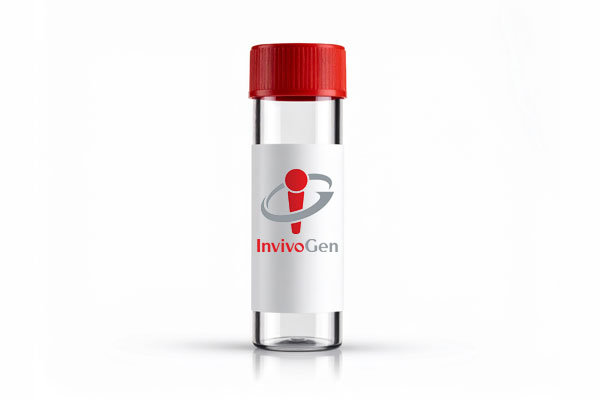
Mouse TLR9 Agonist Kit
-
Cat.code:
tlrl-kit9m
- Documents
ABOUT
Set of known agonists for mouse TLR9
This kit contains archetypal CpG ODNs of the A-, B- or C-class described for mice cells immunostimulation via TLR9.
Choose the most suitable class of ODN for your studies, from:
All products are for research use only, and not for human or veterinary use.
SPECIFICATIONS
Specifications
Mouse
ODN 1585 (class a): 5’- ggGGTCAACGTTGAgggggg -3’ (20 mer)
ODN 1585 Control: 5’- ggGGTCAAGCTTGAgggggg-3'' (20 mer)
ODN 1826 (class B): 5’- tccatgacgttcctgacgtt-3’ (20 mer)
ODN 1826 Control: 5’- tccatgagcttcctgagctt -3’ (20 mer)
ODN 2395 (class C): 5’- tcgtcgttttcggcgc:gcgccg-3’
ODN 2395 Control: 5’- tgctgcttttggggggcccccc -3’
PRR cellular assays
Each lot has been functionally tested and validated
CONTENTS
Contents
-
Product:Mouse TLR9 Agonist Kit
-
Cat code:tlrl-kit9m
-
Quantity:1 kit
- 100 μg (15.51 nmol) ODN 1585
- 100 μg (15.51 nmol) ODN 1585 Control
- 100 μg (15.71 nmol) ODN 1826
- 100 μg (15.71 nmol) ODN 1826 Control (ODN 2138)
- 100 μg (14.18 nmol) ODN 2395
- 100 μg (14.18 nmol) ODN 2395 Control
- 1.5 ml endotoxin-free water
Shipping & Storage
- Shipping method: Room temperature
- Upon receipt store at -20°C.
- Avoid repeated freeze-thaw cycles
Storage:
Caution:
Details
CpG ODNs are synthetic oligonucleotides that contain unmethylated CpG dinucleotides in particular sequence contexts (CpG motifs). These CpG motifs are present at a 20-fold greater frequency in bacterial DNA compared to mammalian DNA [1, 2]. CpG ODNs are recognized by Toll-like receptor 9 (TLR9) leading to strong immunostimulatory effects.
• ODN 1585 is a class A CpG ODN with a preference towards mouse TLR9. Class A CpG ODNs are characterized by a phosphodiester central CpG-containing palindromic motif and a phosphorothioate 3’ poly-G string. They induce high interferon-α (IFN-α) production from plasmacytoid dendritic cells (pDC) but are weak stimulators of TLR9-dependent NF-κB signaling.
• ODN 1585 Control contains GpC dinucleotides instead of CpGs and can be used as a negative control together with ODN 1585.
• ODN 1826 is a class B CpG ODN with a preference towards mouse TLR9. Class B CpG ODNs contain a full phosphorothioate backbone with one or more CpG dinucleotides. They strongly activate B cells but weakly stimulate IFN-α secretion.
• ODN 1826 Control (also known as ODN 2138) contains GpC dinucleotides instead of CpGs and can be used as a negative control together with ODN 1826.
• ODN 2395 is a class C CpG ODN for human and mouse TLR9. Class C CpG ODNs combine features of both classes A and B. They contain a complete phosphorothioate backbone and a CpG-containing palindromic motif. Class C CpG ODNs induce strong IFN-α production from pDC and B cell stimulation.
• ODN 2395 Control contains GpC dinucleotides instead of CpGs and can be used as a negative control with ODN 2395.
1. Krieg A.M. et al., 1995. CpG motifs in bacterial DNA trigger direct B-cell activation. Nature, 374(6522):546-9.
2. Bauer S. et al., 2001. Human TLR9 confers responsiveness to bacterial DNA via species-specific CpG motif recognition. PNAS 98(16):9237-42.
DOCUMENTS
Documents
Technical Data Sheet
Safety Data Sheet
Certificate of analysis
Need a CoA ?
